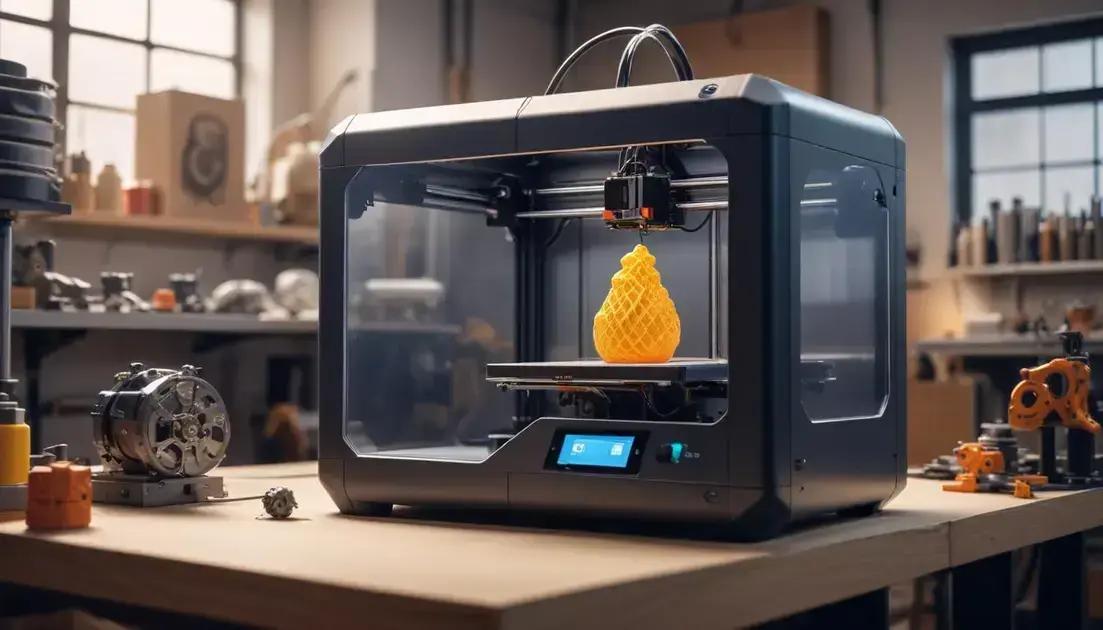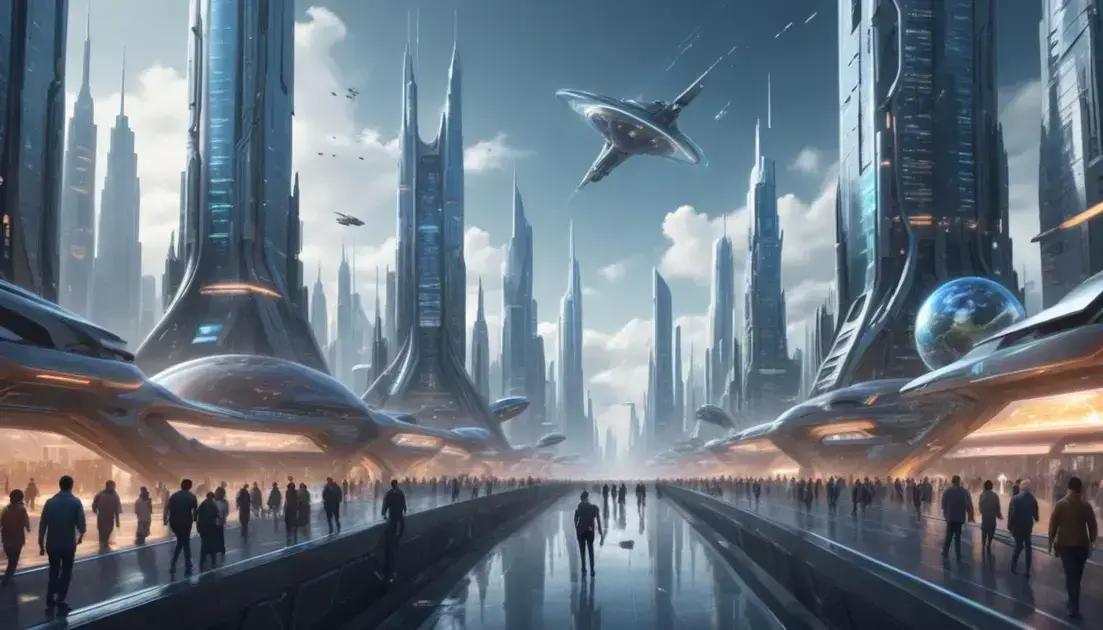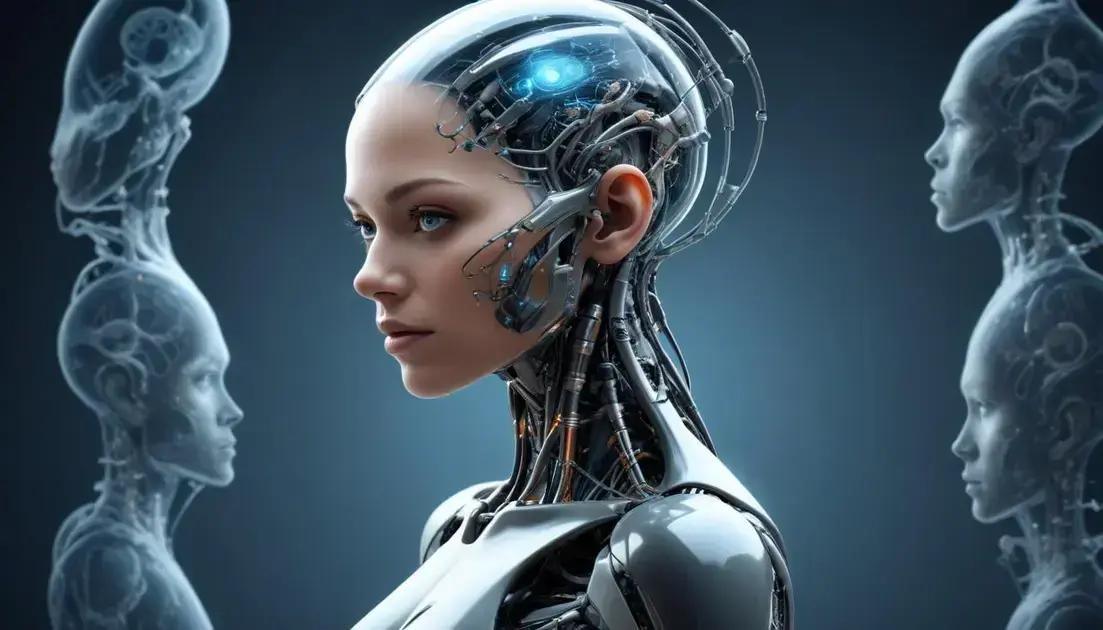
3D Printing: From Idea to Object in Minutes
3D printing is a transformative technology that allows for the creation of objects layer by layer from a digital model. It offers significant benefits across various industries such as healthcare, where custom implants improve patient outcomes, and automotive, where rapid prototyping enhances design efficiency. The future of 3D printing includes advancements like bioprinting for living tissues, innovative materials for stronger products, and increased sustainability through reduced waste. As technology evolves, 3D printing will play a crucial role in shaping manufacturing, education, and design, making it an essential tool for innovation and creativity.
3D Printing is changing how we create and produce objects, sparking innovation across various fields. Are you curious about how this technology can take your ideas from concept to reality in just minutes?
Understanding 3D Printing
Understanding 3D Printing helps you see how this technology can reshape our world. 3D printing is about creating three-dimensional objects from digital files. Let’s break it down.
First, you need a model. This model is made using computer-aided design (CAD) software. Think of it as a digital blueprint. Once you have your model, it’s time to get printing!
The 3D printer takes the model and builds it layer by layer. It uses materials like plastic, metal, or even special resins. Each layer sticks to the one below it, forming the final object.
One big advantage of 3D printing is customization. You can easily change your digital model to meet specific needs. This makes it ideal for industries like healthcare, where custom tools or implants are sometimes necessary.
Another benefit is speed. Traditional methods might take weeks to create a prototype. In contrast, 3D printing can produce parts in just hours. This speed brings innovation to life quicker!
Finally, 3D printing can help reduce waste. Instead of cutting away material from a larger piece, you only use what you need. This not only saves money but is also better for the environment.
In summary, understanding 3D printing opens doors to new opportunities. Whether in design, manufacturing or healthcare, its impact is profound.
Benefits Across Industries
Benefits Across Industries are clear, showing how 3D printing changes the game everywhere. Let’s explore some key areas where it shines.
In healthcare, 3D printing is revolutionizing patient care. Doctors can create custom implants and prosthetics tailored to each patient. This leads to better fits and improved outcomes.
The manufacturing sector also feels the impact. Traditional methods are often slow and wasteful. With 3D printing, companies can produce parts quickly and with less waste. This makes production more efficient and cost-effective.
In automotive design, 3D printing allows for rapid prototyping. Designers can test new ideas quickly, helping to speed up the design process. This means cars can hit the market faster and be more innovative.
Looking at education, schools see huge benefits too. 3D printing gives students hands-on experience with design and engineering concepts. It helps them learn in a fun and engaging way.
Even the fashion industry is getting in on the action. Designers use 3D printing to create unique clothing and accessories. This opens up new creative possibilities that weren’t possible before.
Overall, the benefits of 3D printing span multiple industries. Its ability to improve customization, speed, and efficiency makes it a valuable tool for innovation.
How 3D Printing Works
How 3D Printing Works is fascinating and straightforward. At its core, 3D printing builds objects layer by layer. Let’s dive into the essentials of this process.
First, you need a design. This design is made using computer software, often called CAD. It lets you create a 3D model of what you want to print.
Once you have your model, the printer starts its magic. It reads the 3D design file and prepares to create the object. The printer lays down material layer by layer. Each layer fuses together with the one below it.
There are different methods of 3D printing. One popular method is called FDM, or Fused Deposition Modeling. This method uses plastic filaments that melt and are laid down in layers.
Another method is SLA, or Stereolithography. It uses a special resin that hardens when exposed to a light source. This creates very detailed and smooth finishes.
No matter the method, the process is similar. The printer takes instructions from the digital model and creates a physical object. This can be anything from toys to medical devices.
3D printing is precise, allowing for intricate designs that traditional methods might struggle with. It offers endless possibilities for creativity and innovation across different fields.
Real-World Applications
Real-World Applications of 3D printing are exciting and diverse. This technology is changing industries in many ways. Let’s look at some real examples.
In healthcare, surgeons use 3D printing to create custom implants. These implants are tailored to fit each patient perfectly. This leads to better surgery outcomes and faster recovery times.
The automotive industry also benefits greatly. Car manufacturers use 3D printing to produce smaller parts quickly. This speeds up production and allows for more flexible designs.
In aerospace, companies are using 3D printing to make lightweight components. These parts help reduce the weight of aircraft, improving fuel efficiency and performance.
Even in fashion, designers are embracing 3D printing. They create unique clothing, shoes, and accessories that stand out in the market. This process brings creativity to life and pushes the limits of traditional fashion.
Construction is also seeing significant changes. 3D printers can build entire homes in a fraction of the time. This method can lower costs and make housing more accessible.
Finally, education is evolving thanks to 3D printing. Schools and universities use it to enhance learning. Students can design and create projects, allowing for hands-on experience in science and engineering.
These applications show how 3D printing is not just a trend. It’s a powerful tool that transforms many fields, making processes easier, quicker, and more innovative.
Future of 3D Printing
Future of 3D Printing looks bright and full of potential. As technology advances, we can expect more innovation in this field. Let’s explore what we might see ahead.
One exciting trend is the growth of bioprinting. This involves printing living tissues and organs. In the future, doctors may create custom organs for transplant using a patient’s own cells. This can reduce rejection rates and save lives.
Another area to watch is improved materials. Researchers are developing new materials that can be used in 3D printing. This includes stronger plastics and even metals. These advanced materials will expand what we can create with 3D printing.
Customization will continue to be a major benefit. As technology improves, more people will use 3D printing to create unique items. Whether it’s a phone case or a piece of jewelry, personalization will thrive.
We might also see 3D printing play a bigger role in sustainability. Companies are looking for ways to reduce waste. 3D printing can help by using only the material needed for each project. This approach will help protect our planet.
Finally, the integration of 3D printing with other technologies like AI and robotics may change production forever. This combination could lead to smarter, more efficient manufacturing processes.
The future holds amazing possibilities for 3D printing. It is set to become an even more vital part of our lives and industries.
Conclusion
In conclusion, the future of 3D printing is exciting and full of possibilities. As technology advances, we can expect to see incredible changes across various industries. From healthcare to manufacturing, 3D printing is set to become even more important.
With advancements like bioprinting and new materials, we’ll be able to create customized solutions that improve lives. Moreover, the commitment to sustainability will make a positive impact on the environment.
As we explore these innovations, it’s clear that 3D printing isn’t just a trend. It’s a powerful tool that will shape the way we design, create, and think about production. By embracing this technology, we can look forward to a future filled with creativity and progress.


